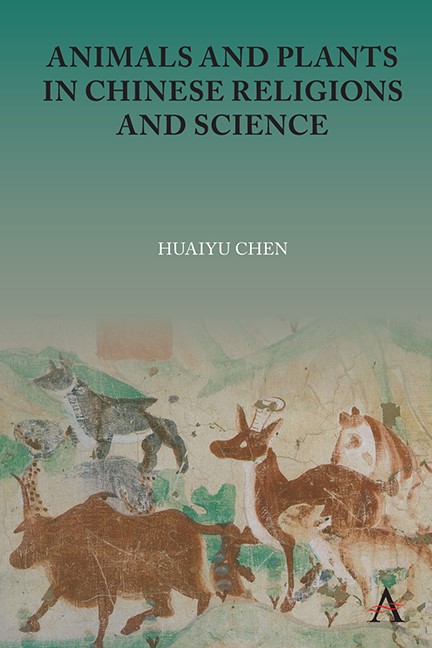Book contents
- Frontmatter
- Contents
- Acknowledgments
- List of Illustrations
- Introduction
- 1 Plant Science and Technology in Medieval China
- 2 Ordering Plants in the Buddhist World: A Medieval Botanical Taxonomy
- 3 Animal Divination and Climate: An Environmental Perspective on the Cult of the Pig
- 4 Zoomancy in Medieval China
- 5 The Changing Images of Zodiac Animals in Medieval Chinese Buddhist Literature
- 6 The Were-Tigers in Medieval China and Its Asian Context
- 7 The Animal Turn in Asian Studies and the Asian Turn in the Animal Studies
- Bibliography
- Index
1 - Plant Science and Technology in Medieval China
Published online by Cambridge University Press: 15 November 2023
- Frontmatter
- Contents
- Acknowledgments
- List of Illustrations
- Introduction
- 1 Plant Science and Technology in Medieval China
- 2 Ordering Plants in the Buddhist World: A Medieval Botanical Taxonomy
- 3 Animal Divination and Climate: An Environmental Perspective on the Cult of the Pig
- 4 Zoomancy in Medieval China
- 5 The Changing Images of Zodiac Animals in Medieval Chinese Buddhist Literature
- 6 The Were-Tigers in Medieval China and Its Asian Context
- 7 The Animal Turn in Asian Studies and the Asian Turn in the Animal Studies
- Bibliography
- Index
Summary
Introduction
Plant science and technology in medieval China cannot be separated from the developments in agriculture, economics, and medicine, as well as cultural practice. The Chinese empire ruled most of East Asia in the medieval period. Numerous species of plants were observed, cultivated, harvested, and used in the vast land of China that spanned a wide range of biomes from boreal to temperate and tropical, with most regions classified as subtropical. Besides indigenous plants, many plants from West, Central, South, and Southeast Asia were introduced into China and East Asia in general. This chapter focuses on particular food plants, fabric plants, flowers, trees, and wood which played vital roles in the socioeconomic life of medieval Chinese people. It highlights various scientific and technological aspects of these plants, such as how medieval people knew about them, cultivated them, grew them, harvested them, and used them for socioeconomic purposes. These plants were also important in the political, cultural, and religious life of medieval Chinese people. As covered in other chapters of this volume, some of these plants were introduced to Korea and Japan and became East Asian plants in general.
From the perspective of plant science and technology, there were several important changes and breakthroughs in medieval China, particularly between the sixth and fourteenth centuries. First, there was a spatial shift in terms of the main agricultural production areas from the north region centered on the Central Plain to the lower Yangtze Valley and Sichuan. In south China, rice-farming spread and multiple-cropping systems which yielded high rice production were used. While in north China, the more prolific and superior winter wheat which could be harvested three times in two years replaced millet to become the major food crop. These new developments made it possible to provide sufficient food supplies to the fast-growing population of the Chinese Empire; in the twelfth century, China surpassed a landmark when its population grew beyond 100 million. The development and expansion of agricultural production in south China might be due to several factors. Politically, there were three big waves of southward immigration that occurred: in the fifth century when the Western Jin 西晉 court lost control of the Central Plain and moved to Jiankang 建康 (modern Nanjing, Jiangsu Province); in the ninth century when the Tang Empire collapsed; and in the thirteenth century when the Mongols defeated the Southern Song Dynasty.
- Type
- Chapter
- Information
- Animals and Plants in Chinese Religions and Science , pp. 5 - 34Publisher: Anthem PressPrint publication year: 2023

